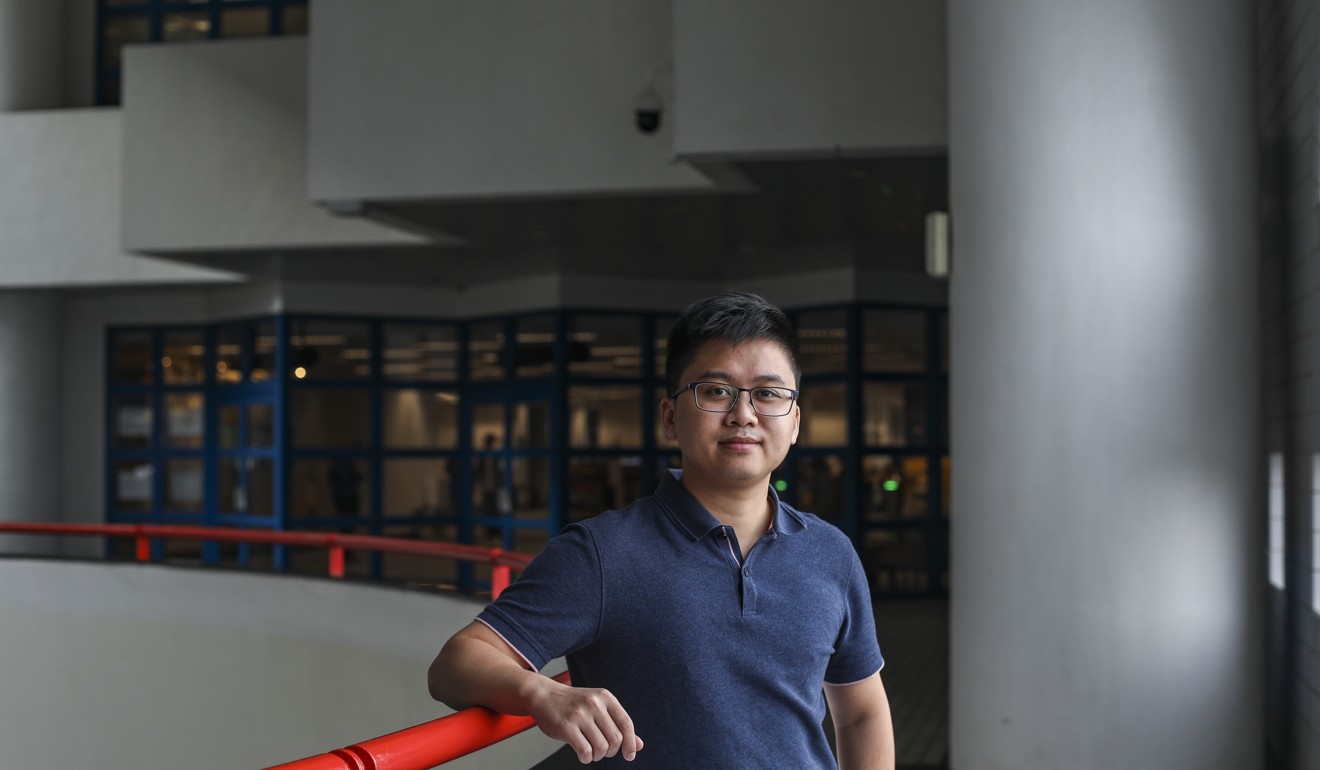
Making long queues a thing of the past is the goal for two computing science master’s students at Hong Kong University of Science and Technology
- Steve Ku and Wu Aoyu are using real-time human traffic flow technology in a bid to cut waiting times at cafeterias, bus stops and even the library
- University has pledged to set aside HK$50 million over the next three years for a smart campus initiative
Imagine never having to wait in a queue ever again – that is the goal of two master’s students frustrated with long lines on the Hong Kong University of Science and Technology campus.
The pair – Steve Ku Bon-kyung and Wu Aoyu – are using real-time human traffic flow technology in a bid to cut waiting times at cafeterias, bus stops and even the library.
Their solution – the Pulse of HKUST – uses technology that collects big data through Wi-fi connections to analyse and monitor crowd distribution and movement on the campus in Clear Water Bay.
“When I was a getting my bachelor’s degree in maths here, I never went for food at lunchtime because of how crowded it got. The few times I did, I waited in line for 40 minutes,” said Wu, a second-year computer science master’s student.
“Imagine how gratifying it would be if there was a way to read human traffic surges and adjust schedules accordingly to avoid having to wait again.”

Long queues at lunch were not the only problem. “There was never room at the library. All the desks would be occupied,” Korean classmate Ku added.
Their idea is part of the university’s new Sustainable Smart Campus as a Living Lab project.
The Pulse, set up with help from Professor Qu Huamin from the department of computer science and engineering, culls data from users who are connected to the school’s Wi-fi and monitors traffic flow using CCTV in real time to show users how busy places are.
HKUST to speed up mainland expansion plan with early enrolment
Users see a live graph displayed on-screen with the campus satellite map in the background.
Green indicates there are still vacancies or the wait is short, while red means places are packed.
“So in special circumstances, like when a lecture has just finished and students are rushing to leave and go home, the real-time data can tell you how packed the bus stop is,” Ku said.
“And the same goes for the library. It will show you which floor has more available seats so you don’t waste time walking around.”
There is only one concern – personal data and privacy issues.

However, the pair defended their design, saying the system only collected the MAC, or media access control, address, a unique 12-character identifier that does not track online activities or personal data.
“It is only an alphanumeric ID that devices broadcast when Wi-fi is switched on, so users do not have to worry about their footsteps being followed since it does not contain identifying information,” Qu said.
‘No longer dirty work’: go for hi-tech manufacturing career, lunar scientists say
Last month, HKUST pledged to set aside HK$50 million (US$6.4 million) over the next three years for the smart campus initiative to encourage students and teachers to try out their innovations before moving on to commercialisation.
For the inaugural round, nine projects were selected, ranging from the human traffic flow scheme to a facial recognition system designed by Chen Qifeng, an assistant professor in the computer science and engineering department.

Chen’s project is being tested at the university library, where equipment has been set up for registered users to open the entrance gates using image-identifying technology.
“We are now looking into ways to extend the service to library book borrowing and attendance-taking in class and access to halls of residence and offices,” Chen said.
So far, at least 160 people have registered.
Jinnie Li, a second-year finance student, said convenience came before privacy concerns for her.
“It used to be a hassle having to dig through my bag to find my ID card. I don’t mind that they have my digital image because the school has my ID picture and personal information anyway,” she said.
Chen said the images were encoded by a system that was only accessible to authorised staff.
“In the unlikely event there is a leak in the system, what the hackers will have is a bunch of numbers and code,” he added.

